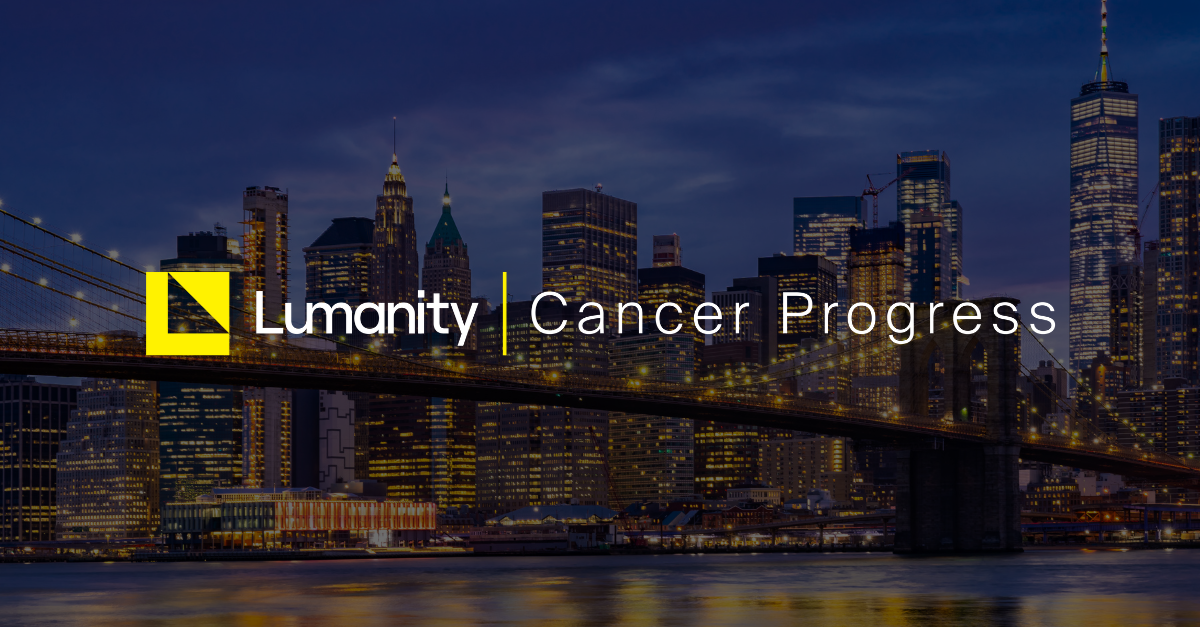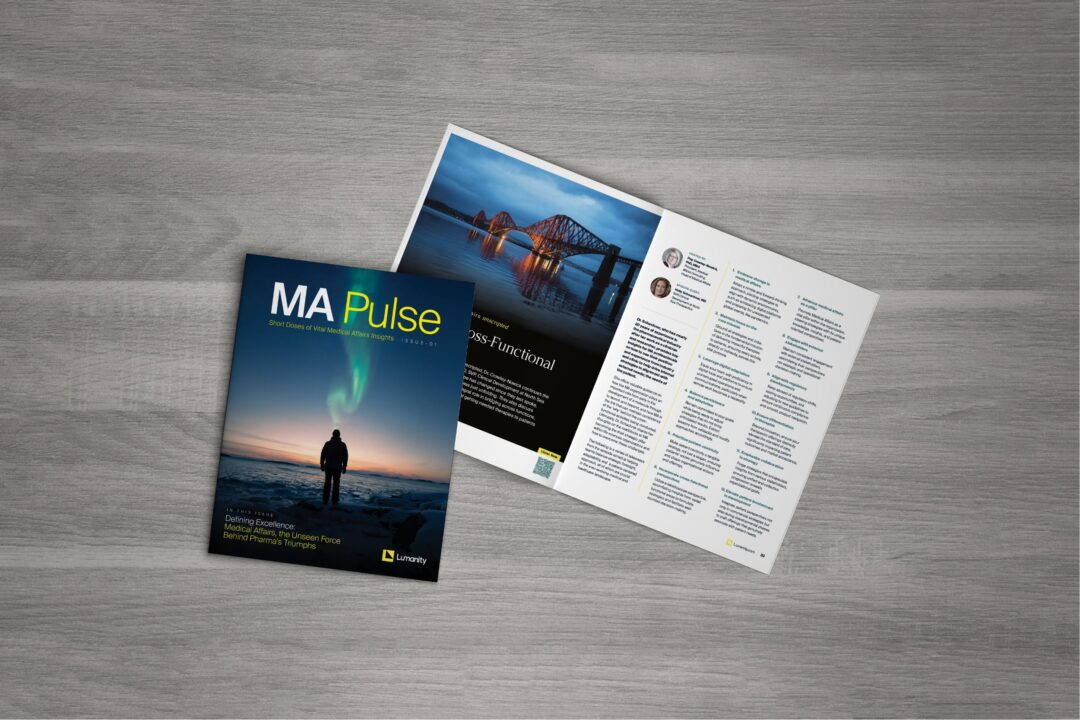Cancer Progress made a triumphant in-person return in New York City on April 2, 2025, in support of the Timmerman Traverse 2025 fundraiser for the Damon Runyon Cancer Research Foundation. This event brought together leading experts for a dynamic exploration of critical issues and groundbreaking advancements shaping the future of oncology, while recognizing the importance of collaboration and innovative solutions. Here are some key takeaways from each panel.
Patient Voices: Shaping the Future of Cancer Care
Summary: This panel emphasized the pivotal role of patient engagement in cancer treatment and research. Patient advocates and cancer survivors shared their personal experiences, underscoring the importance of integrating patient perspectives into clinical trials and medical research to improve treatment options, quality of life, and decision-making processes in cancer care.
Key Takeaways:
- Patient engagement is crucial not only because it is ethically right but also because it adds value to research, education, stakeholder engagement, and treatment outcomes.
- Decision-making in cancer treatment is highly personal, with patients weighing side effects and quality of life alongside potential benefits. Shared decision-making that respects patient preferences is essential.
- Even the most motivated, well-informed patients face challenges getting optimal care and their choice of clinical trial or treatment, in clinician interactions, navigating clinical trial options, managing clinical trial logistics, access and affordability, and side effects/trade-offs of the treatments themselves
- Clinical trials are not just science experiments: they are often a patient’s best hope for relief and/or survival and should be designed and implemented accordingly.
- Social media connects patients in unprecedented ways, making it easier than ever for rare disease patients to find, inform, and support each other
Back to the Future: Next-Generation Platforms
Summary: This session highlighted the challenges and opportunities in the current oncology landscape, focusing on the pressures faced by platform and early-stage companies, the cyclical nature of oncology advancements, and the balance between market size and innovation.
Key Takeaways:
- The industry needs new ways to balance target vs modality risk. The historical tendency to avoid stacking risk has led to an overabundance of platforms pursuing the same small set of validated targets.
- Platform valuation is challenging, especially in this market: Usually a biotech’s value is determined by the lead asset(s), not the platform. In today’s market, investors and potential partners demand even more asset validation than they historically did.
- However, platforms do have value, and platform deals still occur: Platforms provide backup asset(s) to derisk lead programs and can generate partnership revenue. There has always been and continues to be a role for novel platforms in pharma e.g. in incubator models.
- Cancer biology and proliferation of next-gen platforms suggest more niche / precise market opportunities, in tension with pharma’s “blockbuster”-focused mindset. This may only work at the portfolio level.
- The pendulum will swing again: Until then, platform companies should continue to build relationships, generate data, de-risk, and innovate.
Commercializing Uphill: Realizing Challenging Propositions
Summary: This panel addressed the challenges associated with bringing innovative therapeutic modalities to market, when the modalities do not readily conform to existing practice. Chimeric antigen receptor (CAR)-T cell therapy and radioligand therapy (RLT) were used as case studies to discuss a range of challenges and solutions, and what it would take to make similarly transformative innovations broadly accessible.
Key Takeaways:
- Uphill is not impossible: CAR-T and RLT prove that success is achievable. Strong efficacy/benefit will drive adoption (eventually), and trailblazer products can support system-level changes that lower the hurdle for other products
- But the challenges are real: E.g. CAR-T/cell therapy can only be given at a limited number of centers. Healthcare systems are not good yet at enabling personalized treatment at scale. Changing practice in under-resourced community settings will be especially challenging.
- Need for education: e.g. training HCP specialists and clinician expertise with new methods remains critical. Also need CDMOs to build capabilities for new modalities as the field advances.
- Need for process changes: e.g. it is important for broad access to drive down costs via scale-up, robotics, regulatory reforms, and potentially decentralization of manufacturing
Breaking With Dogmas: What Is Holding Us Back?
Summary: Although oncology drug development has yielded many transformative therapies, the probability of success is dismal, and R&D costs are too high. This panel discussed how much the current R&D paradigm is anchored to cytotoxic chemotherapy, and the new approaches that will be needed to advance different therapeutic innovations in more efficient and productive ways.
Key Takeaways:
- Focus early on translation and transformational impact: From preclinical stages, drug developers should have a clear hypothesis/vision for what the drug is intended to achieve for cancer patients, and pursue true translational biology, not just discovery biology
- Pursue signal-finding faster and earlier: Tailor early clinical programs to drive decision-making, ideally in earlier lines of therapy as fairer tests of efficacy.
- Turning cancer into a chronic disease may require novel endpoints: E.g. a drug that produces long-term stable disease should not rely on ORR for signal-finding. Decline in ctDNA or MRD negativity could be considered, with the corresponding validation
- Next gen immunotherapy / in vivo immune reprogramming may require novel combinations: There are many approaches in development (e.g. engineered myeloid cells, in vivo CAR-T, vaccines, etc.) but it may be that stacking multiple therapies may be needed to be transformative.
- New collaboration models—including with academia, non-profits, and China entities—may be needed to lower costs of signal-finding and lower barriers of cross-company collaboration
- There are diverse innovative visions for transforming cancer care e.g. what if drugs were approved mainly based on safety and then vetted for efficacy through real-world evidence? Only through rethinking the R&D paradigm can such new treatment concepts be realized.
Boats and the Tide: Changes in the Pharma Ecosystem
Summary: This panel focused on the evolving dynamics within the pharma oncology ecosystem, emphasizing the importance of understanding the interplay between various stakeholders and highlighted themes of uncertainty and prioritization.
Key Takeaways:
- The challenging market demands re-prioritization: Prioritization is always a need, but pivots are needed when the environment changes. Recalibration of the pipeline may be a silver lining of capital scarcity and to preserving innovation
- “Investors would love biotech if it’s fixed”: There are major investors who avoid biotech because of the long-time horizon, low success rate, hyper-competitiveness, and regulatory complexity. Ameliorating these issues could produce a large influx of capital and accelerate innovation
- We need to overcome progression-seeking culture: Drug development should be about doing the right experiment and the right analysis to inform decision making that drives innovation and improve outcomes— Instead, human nature and current incentives often lead to doing experiments geared to keeping the program alive often with limited progress
- There are better and worse ways to pursue validated targets: Pursuing the same target with successive generations of differentiated modalities (e.g. HER2) is more productive than having multiple products with minimal differentiation (e.g. CD19 auto-CAR-T).
- China has ramped up pipeline productivity and NewCos are bringing these assets to the West: How do we better leverage and/or learn from what China has achieved in the form of innovation and from an accelerated timeframe
- Technological innovations such as virtual clinical trials with AI may compress development timelines and increase probability of success
- A vision for “Oncology 2.0” beyond checkpoints to the next breakthrough frontier includes I-O 2.0 (bispecifics, etc), Precision Oncology 2.0, Cell Therapy 2.0, and the concept of reprogramming cancer cells. As an industry we must abandon incremental benefit and pursue ambitious, transformational impact.
Cancer Progress 2025 highlighted the incredible advancements and persistent challenges within the field of oncology. The event underscored the importance of patient engagement, continuous innovation, and the need for new paradigms in drug development. It also brought to light the complex dynamics of commercialization and the evolving roles of different stakeholders within the pharma ecosystem. As we look to the future, the insights and collaborative efforts from this event will be instrumental in driving forward the next generation of cancer treatments and improving patient outcomes worldwide.
Download the presentation
To learn more about Cancer Progress, visit https://lumanity.com/events/cancer-progress-2025/











